





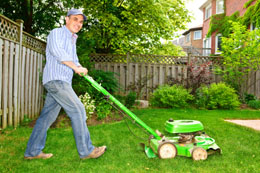 Maintaining a lawn is hard work. It is an ongoing process, and to get a healthy lawn, you need to devote a good amount of time to its maintenance. You can create a beautiful lawn with great effort, and to keep it that way, you need to take care of it by regularly weeding it, mowing it, using the right mix of fertilizers and a host of other methods. Weed Control
Maintaining a lawn is hard work. It is an ongoing process, and to get a healthy lawn, you need to devote a good amount of time to its maintenance. You can create a beautiful lawn with great effort, and to keep it that way, you need to take care of it by regularly weeding it, mowing it, using the right mix of fertilizers and a host of other methods. Weed Control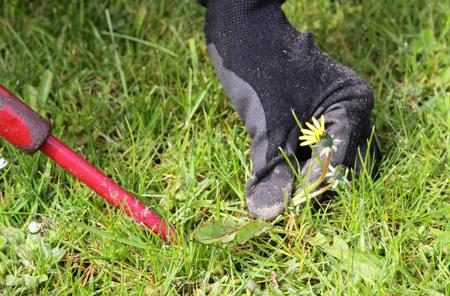 Check your lawn at regular intervals to see if it has been invaded by weeds. You may find that weeds start to grow in spots that are barren or if the turf is thinning. If you find any such spots, scatter grass seeds over them, and regularly water them. If the turf has thinned out, spray fertilizers over the area for the grass to grow right back up. Grass also thins out in areas that witness heavy foot traffic. Weeds may also sprout in areas of the lawn that are close to the driveways and patios. Pull out these weeds as soon as you spot them. It's better and cheaper to nip weed growth in the bud, rather than letting the problem go unnoticed. If not checked, weeds can grow rapidly and pulling them out would not be a feasible way to get rid of them. You may have to make use of herbicides which may turn out to be costly. If at all you have to use them, make sure you read the instructions carefully before applying them. Always water your lawn deeply and fertilize it with nitrogen to prevent growth of weeds like dollar spots and crabgrass. If you spot dandelions and want to clear them from your lawn, spray vinegar on them instead of herbicides. Maintaining pH Level of Soil
Check your lawn at regular intervals to see if it has been invaded by weeds. You may find that weeds start to grow in spots that are barren or if the turf is thinning. If you find any such spots, scatter grass seeds over them, and regularly water them. If the turf has thinned out, spray fertilizers over the area for the grass to grow right back up. Grass also thins out in areas that witness heavy foot traffic. Weeds may also sprout in areas of the lawn that are close to the driveways and patios. Pull out these weeds as soon as you spot them. It's better and cheaper to nip weed growth in the bud, rather than letting the problem go unnoticed. If not checked, weeds can grow rapidly and pulling them out would not be a feasible way to get rid of them. You may have to make use of herbicides which may turn out to be costly. If at all you have to use them, make sure you read the instructions carefully before applying them. Always water your lawn deeply and fertilize it with nitrogen to prevent growth of weeds like dollar spots and crabgrass. If you spot dandelions and want to clear them from your lawn, spray vinegar on them instead of herbicides. Maintaining pH Level of Soil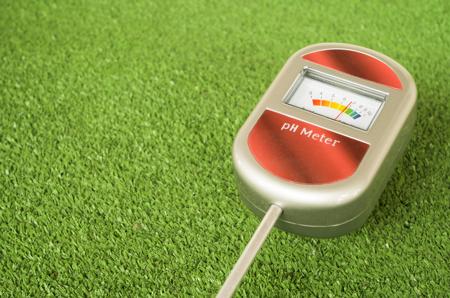 The soil's pH level is crucial for a healthy lawn. Get the pH level tested, either by purchasing a pH tester or by professionals. The ideal pH level should be between 6 and 7. If it's lower than 7, the soil is acidic. If the reading is higher, the soil is alkaline. Lime is generally sprinkled over the turf to raise pH levels (in the form of calcitic or dolomitic lime), and granulated sulfur is added to reduce the pH level. Very high or very low pH levels mean that the grass and plants are not receiving adequate nutrients from the soil in the form of nitrogen, magnesium, sulfur, phosphorus, etc., and this may result in an unhealthy lawn.Mowing
The soil's pH level is crucial for a healthy lawn. Get the pH level tested, either by purchasing a pH tester or by professionals. The ideal pH level should be between 6 and 7. If it's lower than 7, the soil is acidic. If the reading is higher, the soil is alkaline. Lime is generally sprinkled over the turf to raise pH levels (in the form of calcitic or dolomitic lime), and granulated sulfur is added to reduce the pH level. Very high or very low pH levels mean that the grass and plants are not receiving adequate nutrients from the soil in the form of nitrogen, magnesium, sulfur, phosphorus, etc., and this may result in an unhealthy lawn.Mowing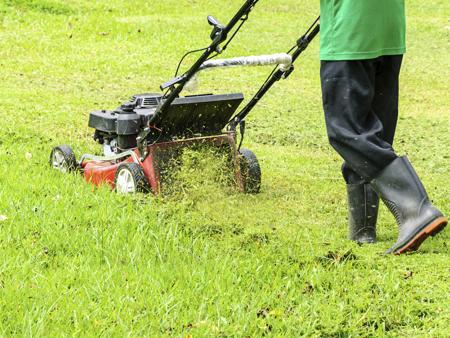 Mowing is one of the most important aspects for a neat looking, beautiful lawn. Mowing the grasses at the proper height and frequency ensures a healthy lawn. Mow the lawn regularly and also trim the growth around trees, gardens, bushes, patios, driveways, and the edges of the yard. Alter the pattern of mowing every week. This ascertains that the lawn does not acquire a set design of indentations and grooves and also prevents soil compaction. The most important guideline to follow while mowing is to cut 1/3rd of the length of the grass. The ideal height of the grass should be maintained between 2½ to 3½ inches. Taller glass blades act as a deterrent to the growth of weeds. Let the grass grow slightly taller, especially in summer, it helps to retain moisture and saves you from watering very frequently. Cut the grass with the lawn mower blades set at a high level. Sharpen the lawn mower blades once every three months. Wait for two days to mow the lawn if it has been treated with fertilizers. Use the mower during the evening hours, to make certain that the newly mowed grass gets a few hours of reprieve from direct sunlight. Also, avoid mowing early in the morning. The dew that forms on the grasses is actually beneficial for it. Mowing will rob the grass from the revitalizing effects of the humidity present in the dew. Fertilization
Mowing is one of the most important aspects for a neat looking, beautiful lawn. Mowing the grasses at the proper height and frequency ensures a healthy lawn. Mow the lawn regularly and also trim the growth around trees, gardens, bushes, patios, driveways, and the edges of the yard. Alter the pattern of mowing every week. This ascertains that the lawn does not acquire a set design of indentations and grooves and also prevents soil compaction. The most important guideline to follow while mowing is to cut 1/3rd of the length of the grass. The ideal height of the grass should be maintained between 2½ to 3½ inches. Taller glass blades act as a deterrent to the growth of weeds. Let the grass grow slightly taller, especially in summer, it helps to retain moisture and saves you from watering very frequently. Cut the grass with the lawn mower blades set at a high level. Sharpen the lawn mower blades once every three months. Wait for two days to mow the lawn if it has been treated with fertilizers. Use the mower during the evening hours, to make certain that the newly mowed grass gets a few hours of reprieve from direct sunlight. Also, avoid mowing early in the morning. The dew that forms on the grasses is actually beneficial for it. Mowing will rob the grass from the revitalizing effects of the humidity present in the dew. Fertilization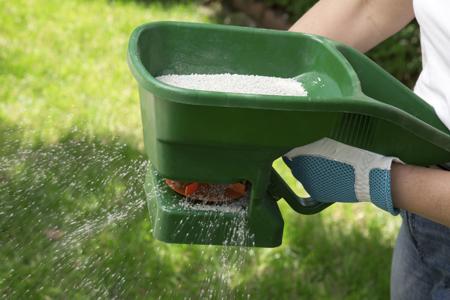 Fertilization is necessary for a healthy lawn. Nitrogen is the nutrient that's vital for the optimal growth of grass, gives it its dark green color, and also keeps weeds at bay. If your lawn has cool season grasses, the ideal time to fertilize would be during the fall, and again during spring. For warm season grasses, it's best to fertilize in late spring and late summer. Fertilization strengthens the root system and enhances new growth. Fertilize your lawn twice a year. Ensure that you use the right kind and amount of fertilizer for your lawn depending on the type of grass that grows. Other than nitrogen, lawns require phosphorus and potassium. Phosphorus aids in seed development and root growth, and potassium builds resistance to diseases. The best way to know how much fertilizer you need is to calculate the area of your lawn in square feet. The fertilizer bag will contain all instructions regarding the concentration of nutrients present, and how much and when to use it. Go through them carefully before you begin fertilizing. Fertilizing a lawn should always be followed by watering it. Do not fertilize a dry lawn. Watering
Fertilization is necessary for a healthy lawn. Nitrogen is the nutrient that's vital for the optimal growth of grass, gives it its dark green color, and also keeps weeds at bay. If your lawn has cool season grasses, the ideal time to fertilize would be during the fall, and again during spring. For warm season grasses, it's best to fertilize in late spring and late summer. Fertilization strengthens the root system and enhances new growth. Fertilize your lawn twice a year. Ensure that you use the right kind and amount of fertilizer for your lawn depending on the type of grass that grows. Other than nitrogen, lawns require phosphorus and potassium. Phosphorus aids in seed development and root growth, and potassium builds resistance to diseases. The best way to know how much fertilizer you need is to calculate the area of your lawn in square feet. The fertilizer bag will contain all instructions regarding the concentration of nutrients present, and how much and when to use it. Go through them carefully before you begin fertilizing. Fertilizing a lawn should always be followed by watering it. Do not fertilize a dry lawn. Watering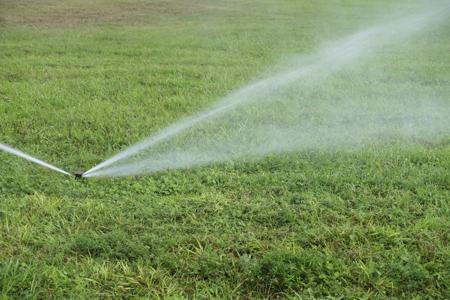 Watering is essential to replenish the soil. Usually most grasses can remain without water for a week, but any later than that, and you will begin to notice signs of drying, when the grass starts turning yellow. Be resourceful and channel the waste water and bath water from your home and water the lawn with it. If the surface of the lawn is very hard and dry, prick it using a garden fork before watering it, which will help retain the water. Water in the cooler part of the day, either mornings or evenings, so less water is lost due to heat and evaporation. Irrigate deeply, and not too frequently. You can also add soluble nutrients to the water, which will not only nourish the grass, but also kill harmful moss and weeds. Dethatching
Watering is essential to replenish the soil. Usually most grasses can remain without water for a week, but any later than that, and you will begin to notice signs of drying, when the grass starts turning yellow. Be resourceful and channel the waste water and bath water from your home and water the lawn with it. If the surface of the lawn is very hard and dry, prick it using a garden fork before watering it, which will help retain the water. Water in the cooler part of the day, either mornings or evenings, so less water is lost due to heat and evaporation. Irrigate deeply, and not too frequently. You can also add soluble nutrients to the water, which will not only nourish the grass, but also kill harmful moss and weeds. Dethatching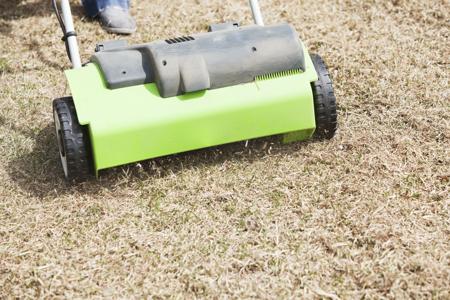 Thatch is nothing but a layer of dead stems, roots, and grass clippings that gradually accumulates over a period of time between the grass and soil. It builds up in lawns especially if they have warm season grasses, and if grass has not been cut for long. The process of removing the thatch from a lawn is called dethatching. This allows the roots to grow better, and absorb more oxygen and water needed for survival. Though excess thatch is harmful for a lawn, a small layer of thatch can actually be useful. It holds back the moisture and also provides some shade from direct sunlight. To dethatch, use special dethatching blades that can be attached to the lawn mower. Or use a mower that's designed just to dethatch. AerationOne of the most eco-friendly approaches to maintain a healthy lawn, aeration of the lawn is done by pricking holes in the lawn and is mostly used to break down compacted soil. Sometimes, also referred to as core aeration, this process also aids in dethatching. Loosening up the compacted soil allows it to breathe by providing it with more oxygen. Nutrients, fertilizers, and water can easily seep deeper into the soil, reaching directly to the roots. Ideally, water the lawn a day prior to aerating it, and aerate when the soil is still soft, but not too mushy. Mulching
Thatch is nothing but a layer of dead stems, roots, and grass clippings that gradually accumulates over a period of time between the grass and soil. It builds up in lawns especially if they have warm season grasses, and if grass has not been cut for long. The process of removing the thatch from a lawn is called dethatching. This allows the roots to grow better, and absorb more oxygen and water needed for survival. Though excess thatch is harmful for a lawn, a small layer of thatch can actually be useful. It holds back the moisture and also provides some shade from direct sunlight. To dethatch, use special dethatching blades that can be attached to the lawn mower. Or use a mower that's designed just to dethatch. AerationOne of the most eco-friendly approaches to maintain a healthy lawn, aeration of the lawn is done by pricking holes in the lawn and is mostly used to break down compacted soil. Sometimes, also referred to as core aeration, this process also aids in dethatching. Loosening up the compacted soil allows it to breathe by providing it with more oxygen. Nutrients, fertilizers, and water can easily seep deeper into the soil, reaching directly to the roots. Ideally, water the lawn a day prior to aerating it, and aerate when the soil is still soft, but not too mushy. Mulching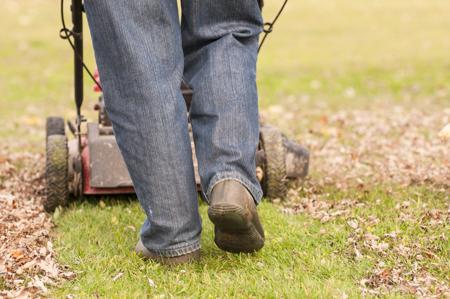 Mulch is a protective layer placed over the surface of the lawn to keep the grass greener and aiding in water retention. The best materials used for lawn mulch would be straws of wheat and barley. The fallen leaves that you rake can be used as mulch too. Since straw and leaves are biodegradable and organic, on decomposition, they nourish the grass and prevent soil erosion. You can use a mulch lawn mower to cut the grass. These specific kinds of mowers cut the top of the grass into small pieces, and these clippings should then be left in the turf to act as mulch. Little wonder then, that tending a lawn involves so many efforts and a great deal of your time. But be sure, all the hard work pays off. A lawn not only makes for a beautiful landscape, but the plants and trees can act as a noise barrier, and provide more oxygen and effectively reduce pollution.
Mulch is a protective layer placed over the surface of the lawn to keep the grass greener and aiding in water retention. The best materials used for lawn mulch would be straws of wheat and barley. The fallen leaves that you rake can be used as mulch too. Since straw and leaves are biodegradable and organic, on decomposition, they nourish the grass and prevent soil erosion. You can use a mulch lawn mower to cut the grass. These specific kinds of mowers cut the top of the grass into small pieces, and these clippings should then be left in the turf to act as mulch. Little wonder then, that tending a lawn involves so many efforts and a great deal of your time. But be sure, all the hard work pays off. A lawn not only makes for a beautiful landscape, but the plants and trees can act as a noise barrier, and provide more oxygen and effectively reduce pollution.
Copyright © www.100flowers.win Botanic Garden All Rights Reserved